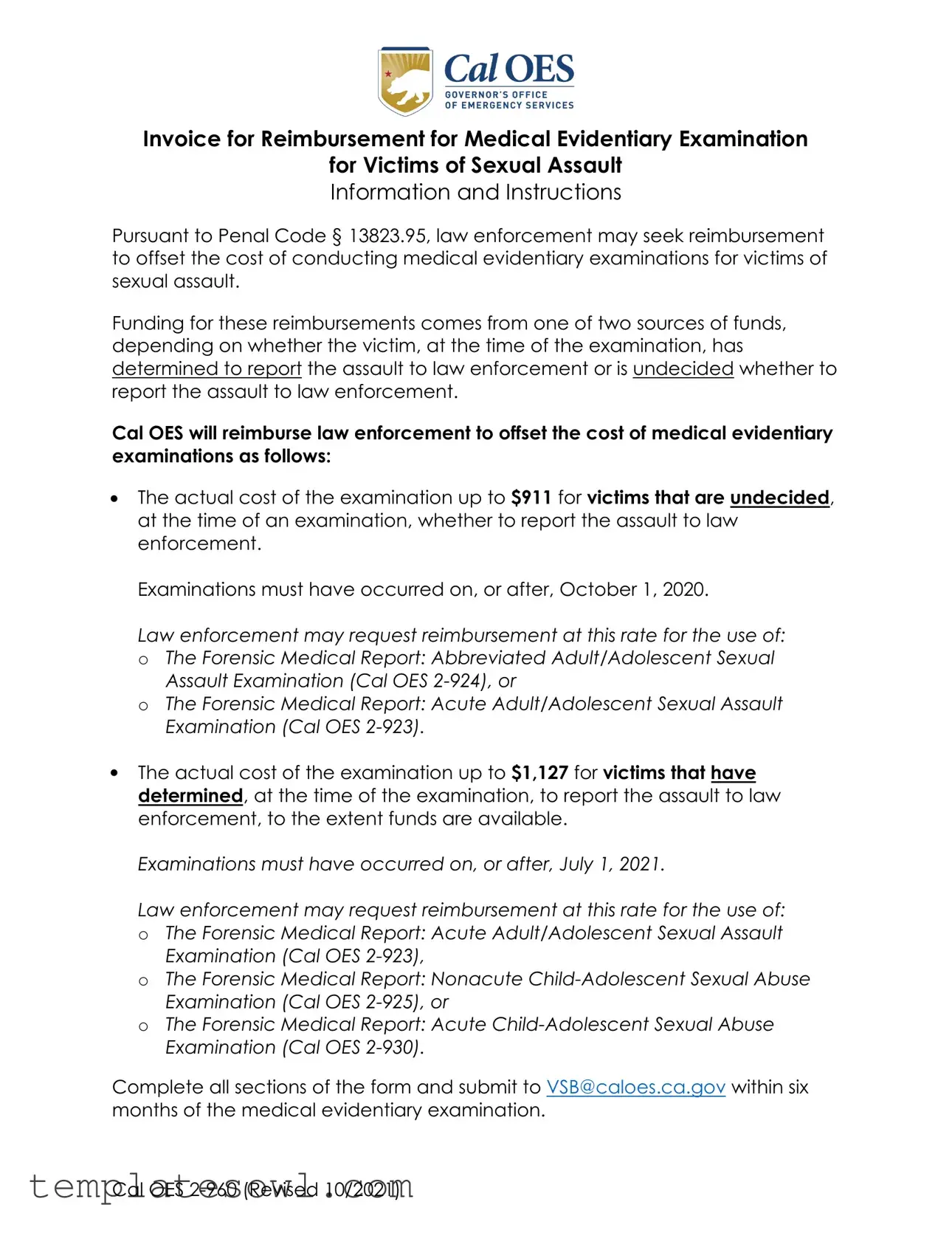Invoice for Reimbursement for Medical Evidentiary Examination
for Victims of Sexual Assault Information and Instructions
Pursuant to Penal Code § 13823.95, law enforcement may seek reimbursement to offset the cost of conducting medical evidentiary examinations for victims of sexual assault.
Funding for these reimbursements comes from one of two sources of funds, depending on whether the victim, at the time of the examination, has determined to report the assault to law enforcement or is undecided whether to report the assault to law enforcement.
Cal OES will reimburse law enforcement to offset the cost of medical evidentiary examinations as follows:
•The actual cost of the examination up to $911 for victims that are undecided, at the time of an examination, whether to report the assault to law enforcement.
Examinations must have occurred on, or after, October 1, 2020.
Law enforcement may request reimbursement at this rate for the use of: o The Forensic Medical Report: Abbreviated Adult/Adolescent Sexual
Assault Examination (Cal OES 2-924), or
o The Forensic Medical Report: Acute Adult/Adolescent Sexual Assault Examination (Cal OES 2-923).
•The actual cost of the examination up to $1,127 for victims that have determined, at the time of the examination, to report the assault to law enforcement, to the extent funds are available.
Examinations must have occurred on, or after, July 1, 2021.
Law enforcement may request reimbursement at this rate for the use of: o The Forensic Medical Report: Acute Adult/Adolescent Sexual Assault
Examination (Cal OES 2-923),
o The Forensic Medical Report: Nonacute Child-Adolescent Sexual Abuse Examination (Cal OES 2-925), or
o The Forensic Medical Report: Acute Child-Adolescent Sexual Abuse Examination (Cal OES 2-930).
Complete all sections of the form and submit to VSB@caloes.ca.gov within six months of the medical evidentiary examination.


